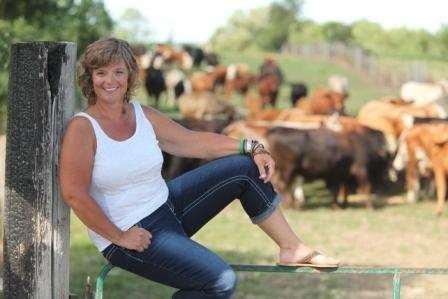Kim Jo Bliss is one farmer having success
By Diego Flammini
Assistant Editor, North American Content
Farms.com
Of all the things that come to mind when thinking about Ontario agriculture, one that may not get enough attention are the opportunities available in the northern part of the province.
“I think we’re overlooked because we’re so far north,” said Kim Jo Bliss, a beef farmer and crop research technician at the Emo Agricultural Research Station in Emo, Ont.
But the distance between Emo and parts of southwestern Ontario (it’s a nearly 17.5 hour drive from Emo to the Ontario Federation of Agriculture office in Guelph, or 16.5 hours to Edmonton, Alberta), can be seen as an advantage.
“Our isolation can be a bonus,” she said. “People know about Thunder Bay and Winnipeg, but there’s lots of land in between there doing really good things.”

Kim Jo Bliss
And when speaking of land, Bliss said prices are a lot lower in her neck of the woods and there’s always land available. In some parts of southern Ontario, land can cost up to $22,000 per acre, according to a 2014 report by Remax.
Bliss admits that sometimes there’s severe weather that passes through the Rainy River District. She said when farmers in southern Ontario get an inch of rain, producers in her area could see six inches – but it’s all part of the process.
“Last year a lot of people had hard times because of the drought,” she said. “But here, droughts can be welcome.”
On the flip side, Bliss said long, warm days with cool nights can lend themselves to good crop yields.
“We had people with 60 bushel soybeans, 40 and 50 bushel canola and our dairy producers can do three or four cuts of alfalfa if they choose,” she said.
Bliss suggests that any beginning farmers looking to venture out on their own should consider moving north.
“They need to visit here to see where we are. Once in the winter and once in the summer,” she said. They should also visit with some of the local producers. “We’ve successfully moved people here and some of them are already pretty active in the district.”